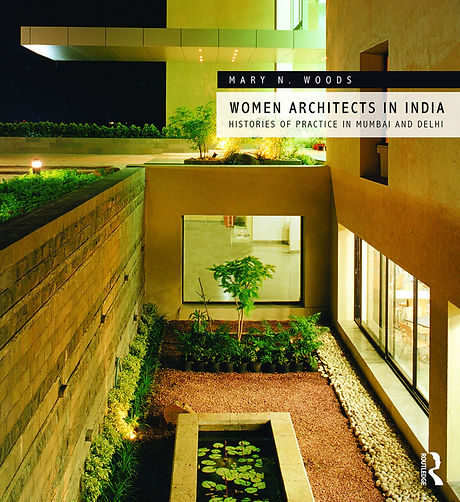Professor Emerita, Cornell University
Books
Women Architects in India: Histories of Practice in Mumbai and Delhi, Routledge
2016, 2018
As the first inclusive study of how women have shaped the modern Indian built environment from the independence struggle until today, this book reveals a history that is largely unknown, not only in the West, but also in India. Educated in the 1930s and 1940s, the very first women architects designed everything from factories to museums in the post-independence period. The generations that followed are now responsible for metro systems, shopping malls, corporate headquarters, and IT campuses for a global India. But they also design schools, cultural centers, religious pilgrimage hotels, and wildlife sanctuaries. Pioneers in conserving historic buildings, these women also sustain and resurrect traditional crafts and materials, empower rural and marginalized communities, and create ecologically sustainable architectures for India.

Beyond the Architect’s Eye: Photographs of the American Built Environment. Philadelphia: Penn Press
2009, 2014
Typical architectural photography freezes buildings in an ideal moment and rarely captures what photographer Berenice Abbott called the medium's power to depict "how the past jostled the present." In Beyond the Architect's Eye, Mary N. Woods expands on this range of images through a rich analysis that commingles art, amateur, and documentary photography, genres usually not considered architectural but that often take the built environment as their subject.
Woods explores how photographers used their built environment to capture the disparate American landscapes prior to World War II, when urban and rural areas grew further apart in the face of skyscrapers, massive industrialization, and profound cultural shifts. Central to this study is the work of Alfred Stieglitz, Frances Benjamin Johnston, and Marion Post Wolcott, but Woods weaves a wider narrative that also includes Alice Austen, Gertrude Käsebier, Berenice Abbott, Margaret Bourke-White, Helen Levitt, Lisette Model, Louise Dahl-Wolfe, Morgan and Marvin Smith, Eudora Welty, Samuel Gottscho, Walker Evans, Max Waldman, and others.

From Craft to Profession: The Practice of Architecture in Nineteenth- Century America. Berkeley, California: University of California Press
1999
his is the first in-depth study of how the architectural profession emerged in early American history. Mary Woods dispels the prevailing notion that the profession developed under the leadership of men formally schooled in architecture as an art during the late nineteenth century. Instead, she cites several instances in the early 1800s of craftsmen-builders who shifted their identity to that of professional architects. While struggling to survive as designers and supervisors of construction projects, these men organized professional societies and worked for architectural education, appropriate compensation, and accreditation.
In such leading architectural practitioners as B. Henry Latrobe, Alexander J. Davis, H. H. Richardson, Louis Sullivan, and Stanford White, Woods sees collaborators, partners, merchandisers, educators, and lobbyists rather than inspired creators. She documents their contributions as well as those, far less familiar, of women architects and people of color in the profession's early days.
